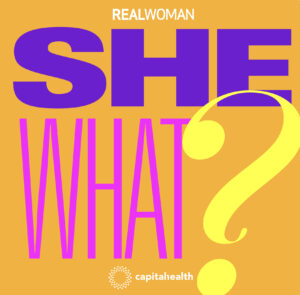It’s hard to watch or play any sport and not see a Gatorade bottle in someone’s hands, whether it’s an Olympian, pro player, or recreational athlete. The neon stuff has had an unrivaled stronghold over the sports hydration market since it splashed onto the scene in 1965. That’s when a University of Florida assistant coach noticed that his players kept suffering from heat-related illnesses. He teamed up with the school’s physicians to concoct a liquid formula to help replenish the fluids and electrolytes (your body needs these to function) lost through sweat. The result was this iconic bright-colored bevy that led the Gators (the drink’s namesake) to lots more wins.
Gatorade continues to win big today, beating out plenty of its competitors. Its latest opponent, ZICO, however, might be the ultimate game-changer. The pure premium coconut water company, founded in 2004, promises to do the same job, only better and healthier. Will the performance drink market’s long-time golden—and red and yellow and blue—child be able to keep its title? Or has it finally met its match? Let’s get ready to rumble!
The Legend
GATORADE ORANGE
G SERIES THIRST QUENCHER
Ingredients | Water, Sucrose, Dextrose, Citric Acid, Natural Flavor, Salt, Sodium Citrate, Monopotassium Phosphate, Gum Arabic, Yellow 6, Glycerol Ester of Rosin, Brominated Vegetable Oil
Nutrition label | (12 fl oz, 2.5 servings per container): 80 calories, 0 g fat, 160 mg sodium, 45 mg potassium, 21 g carbohydrates, 21 g sugars, 0 protein
The Challenger
ZICO NATURAL
Ingredients | 100% natural coconut water
Nutrition label | (11.2 fl oz, 1 serving per container): 60 calories, 0 g fat, 54 mg sodium, 690 mg potassium, 15 g carbohydrates, 14 g sugars, 0 protein
Round 1: Electrolytes
Gatorade: It claims to be packed with this stuff, but it contains only two electrolytes—sodium and potassium—and not much of them. “The minimum daily requirement of potassium is 4700 mg. According to the USDA, 92% of American are potassium deficient. If this drink is supposed to replenish you after you’ve exercised and sweat, 45 mg isn’t going to be enough,” says Jayson Calton.
Zico: It has a whopping five electrolytes: sodium, magnesium, calcium, potassium (690 mg), and phosphorus. “You’re drinking less liquid than the Gatorade and getting a lot more,” says Mira Calton.
Round 2: Additives
Gatorade: Banned in 100 countries, brominated vegetable oil, or BVO, is an emulsifier that’s used to keep flavoring from separating and floating to the surface, says Mira Calton. BVO is made with bromine, which is a toxic chemical used in some flame-retardants in furniture and plastics, she says. While that’s gross, what’s worse is that BVO may cause build-up in fatty tissues, which can lead to reproductive and behavioral problems. It also blocks the absorption of iodine in the thyroid, which has been linked to thyroid disease and even cancer.
You know that neon orange doesn’t come from an actual orange. Food coloring has been in the hot seat since it was first linked to learning and concentration disorders in kids. “The European Union recently passed a law requiring all beverages that contain certain artificial colors to carry a warning that consumption of those products may lead to hyperactivity in children Mira Calton says. Yellow 6, in particular, has already been banned in certain foods in Norway and Austria for containing cancer-causing compounds benzidine and 4-aminobiphenyl, she adds.
There’s nothing natural about these “natural flavors.” In fact, they contain monosodium glutamate (MSG) to enhance flavors. Unfortunately, it also may encourage obesity, overeating, and addiction.
Your pearly whites will hate citric acid, a derivative from GMO corn. “When there’s too much acid, it will pull enamel off your teeth. Be sure to rinse with water afterward!” Mira Calton says.
Zico: It has just one ingredient—straight up coconut water. So it has zero additives. This stuff is so pure and natural, it was used in World War II as an IV fluid to save lives in the South Pacific.
Round 3: Sugar
Gatorade: While you need a certain amount of sugar to help fuel muscles, too much of the wrong kind, like dextrose and sucrose, could spell trouble. “When you see dextrose, that just means corn-derived glucose, which has proven to upset the mineral balance in the body. It blocks the absorption of magnesium and chromium,” says Jayson Calton. “Sugar also lowers your immune system because it blocks the antioxidant vitamin C from being absorbed,” he says. “This will ultimately affect your sports performance because you won’t be able to repair properly from oxidative damage done through exercise,” Mira Calton adds.
Zico: One bottle has 15 grams of sugar, which doesn’t seem significantly lower than Gatorade’s 21 grams. But when you multiply the 21 grams by 2.5 (servings per container), you’re really getting more than 50 grams of the sweet stuff in one bottle of Gatorade.
It’s important to note that all ZICO aren’t created equal. Some flavors are packed with sugar, too (ZICO Latte has 23 grams in its 14-ounce bottle), so be sure to check the nutrition label. “Sugar is sugar, and you just don’t want to ever take in too much of it,” Jayson Calton says.
Winner by knockout: Zico!







